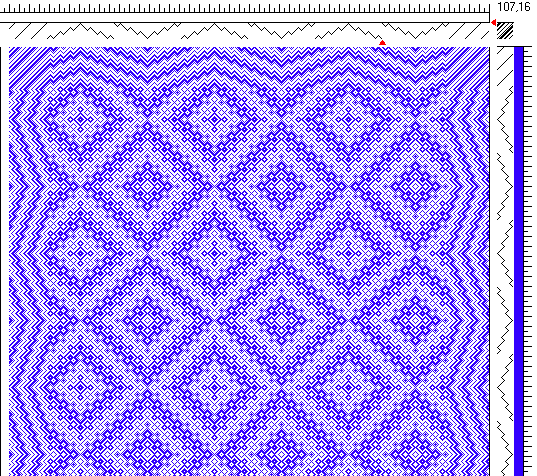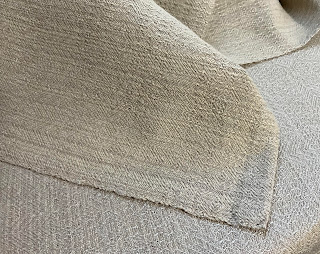My parents were not 'well educated', not because they weren't intelligent, but because they grew up in a time and place that didn't allow for it.
It seems hard to remember that it was just my parent's generation who rarely finished high school, never mind went to college.
My father was born in a tiny village south of where I was born and continue to live. When he was six years old there was no school in that village, because it had burned down. He got home schooled by his elder siblings and wound up with a grade 2 level of 'schooling'.
My mother was raised in Montreal, but it was the depression and then war time, and her family had no extra money so she left school in junior high in order to get a job and contribute to the family income by paying her own way for what she needed (clothing, etc.)
It was only when I was in high school that she determined to go to college as a 'mature' student in order to get her Early Childhood Education certificate.
Both parents encouraged (insisted!) that both of their children at least finish high school, even if it meant dragging my brother through grade 12 kicking and screaming.
I discovered reading at a very early age; he discovered it when dad was sick and he needed to be 'quiet'. We shared favourite books from time to time.
I don't know if it was the wide ranging reading I did as a kid (anything and everything, pretty much) or just the nature of my personality, but I was never too much bothered about what everyone else was doing. My interests were wide ranging and I soaked up knowledge like it was water and I was a sponge.
When I decided to learn how to weave in order to earn an income by weaving, my father was in the last few months of his life. If he had been healthy, I'm quite sure he would have considered my decision with grave misgivings. But he was fighting for every day, every week, consumed with pain that would not stop. I doubt he gave much thought to my future security, at that point.
As I look back on making that decision, I still wonder how on earth I managed to even consider it, given how much I wanted, *needed* security. And living the life of a professional/production weaver was anything but 'secure', in terms of income.
But here's the thing. It never mattered too much to me what other people thought. I didn't care if people thought I was foolish or strange (warped?). Something, somewhere, was moving me in the direction of that choice, and once I sat at the floor loom for the very first time, shuttle in hand, it was like I had finally come 'home'.
And I knew I'd made the correct choice.
Oh, it wasn't 'easy' - far from it. But nothing worth doing is, really. Or at least not in my world.
Do I have regrets? A few. Usually for persisting too long in something that was clearly not working. But I learned. I learned when to hold 'em, and when to fold 'em. And that is a very useful thing to learn.
One of the biggest attractions to becoming a weaver was discovering a discipline where the learning never stopped.
And so it still is. As I organize my thoughts and approach to the experiments I am about to run, I find myself fully engaged with the craft, again. I find myself excited to see if my conclusions are actually correct or if there will be more new information to add to my foundation of knowledge.
Just because I have a certificate that says 'master weaver' doesn't mean I have all the answers. It simply means I have asked enough questions to gain a degree of knowledge that lets me ask even more questions, then go looking for the answers. It means I have an open mind and am willing to take on more information, and even (gasp!) change my mind! Or adjust what I teach or say to others.
I think the term 'master' gets confused with knowing 'everything' when there is no way to know it all, because change one thing, and everything can change.
And sometimes I find myself wandering off the known path into the unknown. Or following the known path but arriving at a different destination (conclusion) than others before me have made.
Leaving myself open to what happens and then trying to figure out why, is a constant in my work of trying to figure it all out.
So, while I am aware of what others have done, I also repeat their experiments and see if I get the same results. If not, why not. If I do, do I draw the same conclusions? Or do I dig further to find out more?
When I set out to write my books, I wanted to write something that added to the foundation of knowledge, not just repeat what others have said. When I set out to write Magic in the Water, there was very little literature available for the handweaver about wet finishing. When I set out to write The Intentional Weaver, I wanted to write the weaving book I would have liked to have had when I set out to learn how to weave. Because so much of what is necessary to creating cloth for a specific purpose simply isn't covered by 'most' other how-to-weave books. In order to weave 'better' I felt that the 'missing' information needed to be made more available. When I wrote Stories from the Matrix, I was wanting to add to the general body of knowledge, look at some aspects of weaving in more depth than is usually presented. And the last book was written to help others who might like to become 'professional' in the craft.
As I look back at my life, I find that I spent a lot of time on the 'road less travelled'. I was aware of many of the 'standard' books available, read most of them. But they didn't always answer the questions I had. So I set out to try to find those answers.
And as I review my life, I don't regret any of that part of what I did.
First three books available here https://www.blurb.com/b/11633019-stories-from-the-matrix
Last book (memoir) available here ko-fi































